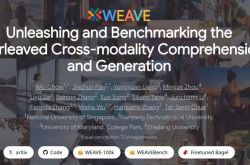Stanford New Study: Redefining Academic Papers as AI Agents
![]() 11/17 2025
11/17 2025
![]() 540
540
Recently, Stanford University published a paper on Paper2Agent, delving into an automated framework that converts academic papers into AI Agents.
Traditionally, comprehending research papers demands significant effort from readers as they need to grasp the paper's code, data, and methodologies, and then apply them to their own projects. This creates obstacles to the widespread dissemination and reuse of academic papers. Paper2Agent, however, transforms research outcomes from passive products into active systems, thereby expediting research utilization, adoption, and discovery.
The Stanford research team meticulously analyzed papers and their corresponding codebases using multiple agents. They constructed a Model Context Protocol (MCP) server and iteratively generated and ran tests to optimize and enhance the generated MCP. These paper MCPs can be seamlessly connected to chat agents (such as Claude Code), enabling them to execute complex scientific queries through natural language while invoking tools and workflows from the original paper.
Paper2Agent has developed an agent that utilizes AlphaGenome to parse genomic variations, as well as an agent based on ScanPy and TISSUE for single-cell and spatial transcriptomic analysis. These agents are capable of reproducing the results of the original papers and accurately addressing new questions posed by users. By transforming static papers into dynamic, interactive AI agents, Paper2Agent introduces a novel paradigm for knowledge dissemination and lays the groundwork for a collaborative ecosystem of AI co-scientists.
Paper2Agent converts static papers into dynamic AI agents, with each agent acting as an interactive expert for the corresponding paper. It can demonstrate, apply, and adapt its methods for new projects.
Here's how its workflow operates:
Paper2Agent transforms research papers into interactive AI agents by constructing a remote MCP server that houses tools, resources, and prompts. By connecting AI agents to this server, dedicated paper agents for different tasks can be created.
Paper2Agent ensures reproducibility by extracting the codebase and setting up an automated environment. Core analytical functions are packaged as MCP tools and validated through iterative testing. The final generated MCP server is deployed remotely and integrated with AI agents, enabling natural language interaction with the paper's methods and analyses.
The conversion process encompasses the following steps:
Identifying the key contributions of the paper, such as datasets, methods, models, or workflows.
Encapsulating these contributions via an MCP server, defining inputs, outputs, and usage instructions.
Connecting the MCP server to an LLM-based agent to enable natural language queries and autonomous execution. Users can then interact with the paper by asking questions, requesting demonstrations, or applying methods to new data.
In comparison to previous studies, Paper2Agent transforms research outcomes from documented knowledge in papers or codebases into executable and conversational knowledge entities.
AlphaGenome is an AI model designed to predict the impact of single nucleotide variations or mutations in human DNA sequences on various regulatory processes. Paper2Agent converts the AlphaGenome paper into an interactive AlphaGenome Agent, enabling automated interpretation of genomic data.
Through natural language queries, users can leverage this agent to prioritize pathogenic genes for disease-related variations, elucidate the regulatory impact of individual variations, and provide references for designing synthetic DNA with specific regulatory functions.
TISSUE is a recently published paper that introduced a new uncertainty-aware method for single-cell spatial transcriptomic analysis. Paper2Agent addresses these challenges by automatically generating ready-to-use agents for various papers and providing Q&A support to guide input preparation and clarify the method's functionality.
Scanpy is a widely used comprehensive software package for analyzing large-scale single-cell transcriptomic data. In practice, many workflows in single-cell data analysis may only rely on parts of Scanpy's functionality. To tackle this, Paper2Agent supports not only converting entire methods into tools but also converting specific parts of paper methods into tools, enabling AI agents to display only the most relevant functions for a given analysis.
However, not every paper can be seamlessly transformed into a powerful agent. If the original codebase is incomplete, poorly documented, or contains unresolved bugs, Paper2Agent cannot reliably convert it into a robust tool.
To better quantify reproducibility and agent usability, the Stanford team introduced a benchmarking method based on manually evaluated examples from the paper as well as new examples designed to test generalization capabilities. This approach demonstrated that the AlphaGenome agent could execute both tutorial-based and new queries with 100% accuracy. Nevertheless, this method is constrained by experts' knowledge of the paper and methods, as well as manual execution and review. Future directions include further streamlining this process through additional agent frameworks (e.g., LLM-as-judge evaluation).
Another limiting factor is the scalability of agentization. Papers may not be the optimal unit for agentization, as each paper typically brings improvements, benchmarks, or applications. In such cases, the most useful agent may not represent a single paper but rather a collection of related research outcomes. These outcomes are aggregated into a coherent interface, where a single MCP can encapsulate multiple related papers. Based on this consideration, the team plans to extend Paper2Agent in the future to flexibly accommodate a broader range of applications.
Ultimately, once knowledge is encoded into active agents rather than static artifacts, its potential extends beyond individual use. Agents can interact with each other, associate methods with datasets, or integrate insights from different fields. Paper2Agent envisions a future where scientific communication goes beyond merely describing results; it also involves creating interactive, collaborative entities that embody and extend research outcomes.
For more technical details, please refer to the paper: https://arxiv.org/pdf/2509.06917







